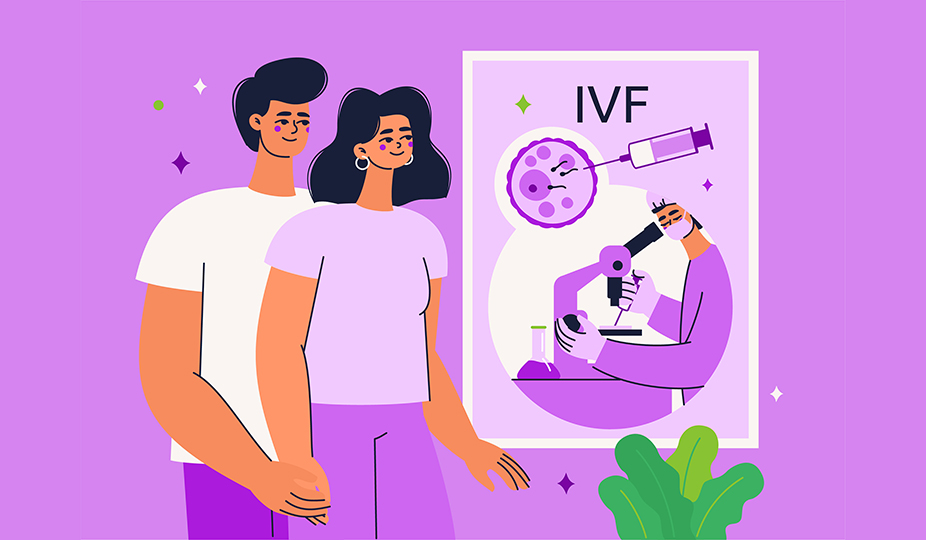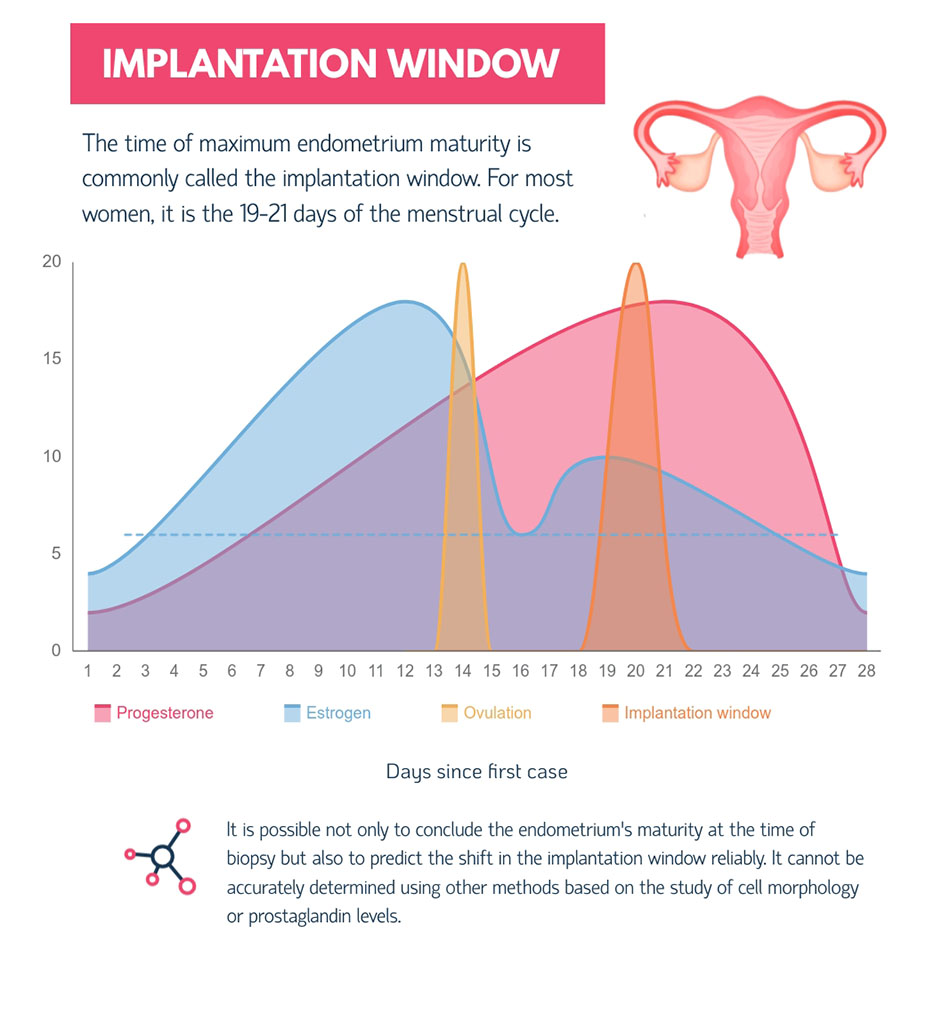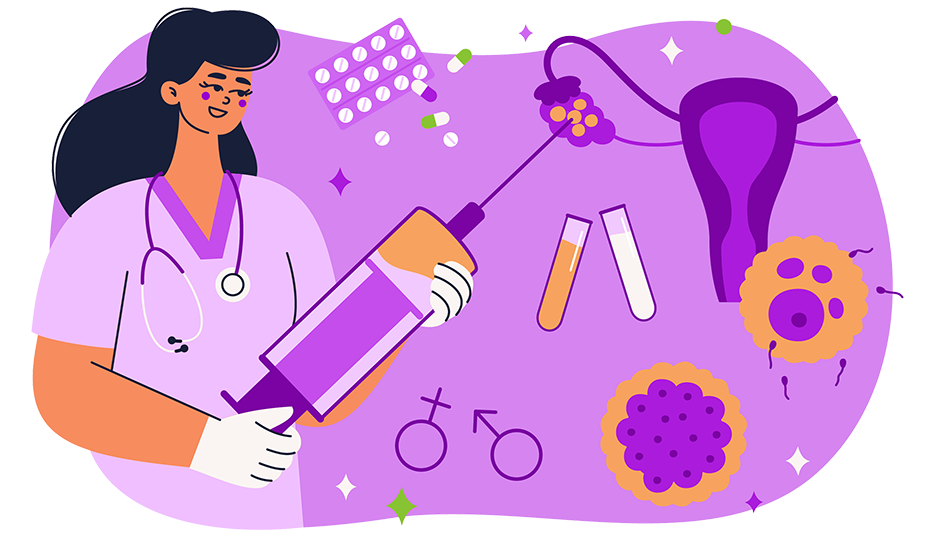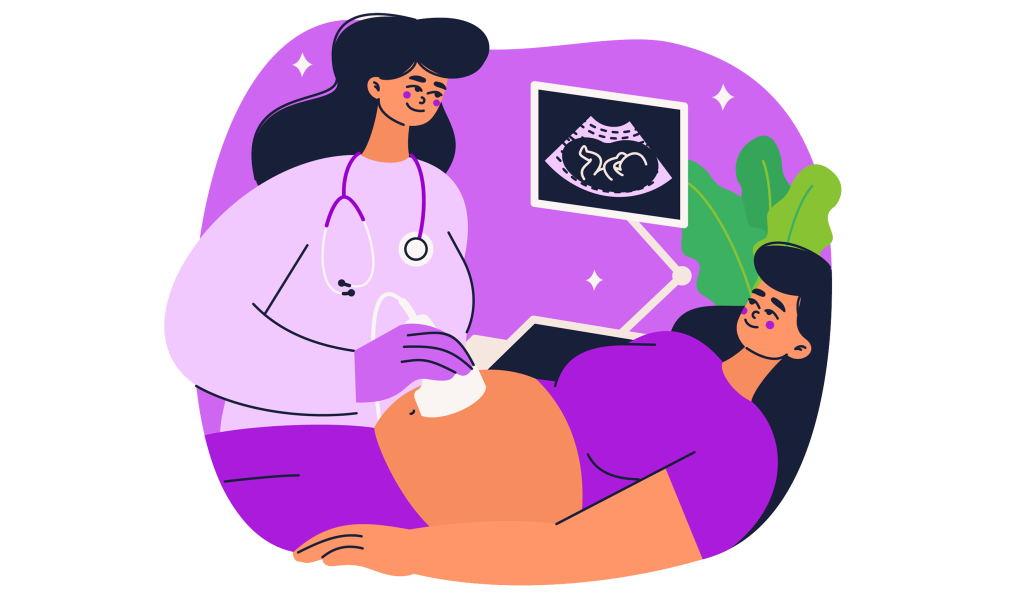IVF Follicle Growth Chart – Comprehensive Guide to Day-by-Day Folicle Sizes
Fertility experts strongly rely on an IVF follicle growth chart to evaluate their maturity and consistent size increase and make sure that ovarian stimulation is successful. They measure dominant follicle size during ultrasound checks and compare them to the reference values. In this article, we will explain what size the follicles should be on each day of the female menstrual cycle’s follicular phase before egg retrieval.

Introduction
Most people don’t know that ovarian follicles are so important for fertility. However, follicles are one of the most integral components of a woman’s reproductive system, and the number of follicles in the ovaries is often a decisive factor that influences conception, either natural or through IVF. That is why, fertility doctors pay special attention to follicle growth in natural and stimulated menstrual cycles and build special charts to classify them as small, growing, and mature.
But before we proceed to the chart and its values, let’s start with the basics and explain what follicles are, how many follicles women should have, and how exactly they define fertility.
What Is an Ovarian Follicle?
An ovarian follicle is a small fluid-filled sac in which an egg grows. Follicles are located within the ovaries, and their number is defined from birth. Each follicle contains an immature egg. You may wonder how many eggs are in the follicle. A single follicle carries only one egg. Every month of the woman’s menstrual cycle one egg reaches maturity, and consequently is released from the follicle. This is what we call ovulation.

As for the period timeframe, ovulation typically occurs every month (28 days on average, but 21-38 days is also normal) for most women between puberty and menopause. Each cycle several follicles begin to develop, but usually only one of them becomes dominant and releases an oocyte.
Follicles that do not release an egg disintegrate. This process is known as atresia and can occur at any stage of follicle development. It is scientifically proven that more than 90% of all primordial follicle reserves go through this degenerative process. Most of them become atretic when they grow more than 1 mm in diameter.
How Many Follicles Should a Woman Have?
In the fertile life period, a woman should optimally have at least 6 visible follicles in one section when performing an ultrasound. It is only six because until the follicle begins to develop, it is primordial. These primordial follicles are microscopic, measuring only 25 micrometers (0.025 millimeters) in size. They are too small and doctors neither can see them during the examination nor detect them by ultrasound.
However, once hormonal signals trigger follicle development, and they begin to mature and grow, they become antral follicles with a size of up to 10 mm. Consequently, they are visible on ultrasound, and doctors can count them.
Follicles and Fertility
During the first visits fertility experts conduct an ultrasound examination (folliculometry) of antral follicles to check the follicles. Additionally, doctors can conduct laboratory tests and check AMH (anti-mullerian hormone) levels to get more details on the ovarian reserve.
After that, the first critical stage of the IVF program is to stimulate follicular growth to obtain a larger number of oocytes for fertilization (optimally 10-15). It consists of using daily injections for 11-12 days, which reinforce the ovaries to mature multiple follicles instead of one (which they do naturally every month) and, therefore, produce more oocytes to fertilize, culture, and produce more embryos. Such stimulation, of course, increases the chances of pregnancy.
During stimulation, doctors monitor the follicle growth and development. Our partner clinics perform 2-3 folliculometry tests at this stage because the size of the follicle is essential to us.
When the follicles reach the optimal size (about 18-22 mm), we schedule follicular aspiration 36 hours after the ovulation trigger injection. This supports oocyte maturation in the same way as in the natural cycle. The optimal time for obtaining oocytes in an IVF program (day 14-15 of the cycle, provided the follicle diameter is 18-22 mm).
How Does Follicle Size Affect Egg Quality and Fertilization?
According to the studies, larger follicles are more likely to provide good-quality mature oocytes than smaller ones. Retrospective case-controlled studies with more than 1500 patients undergoing IUI and ICSI conducted in 2020 showed that mature eggs give an 89.4% fertilization success rate.
The size of the follicles corresponded to different eggs. Each fertilized egg was cultured individually to be monitored during embryo culture.
| Oocyte type | Average Follicle size |
|---|---|
| Immature (GV) | 12,5 mm |
| Immature (MI) | 15,3 mm |
| Mature (MII) | 18,3 mm |
This table combines information about the types of oocytes and the percentage distribution based on the follicle diameter.
| Follicle diameter | GV | MI | MII |
|---|---|---|---|
| <12 mm | 100% | 0% | 0% |
| 12-14,6 mm | 48% | 29% | 23% |
| 14,7 – 21,8 mm | 0% | 5% | 95% |
IVF Follicle Growth Chart
Now let’s proceed to the exact IVF follicle growth chart that helps to determine how many oocytes a woman can potentially have. Follicle growth is closely monitored through ultrasound scans and blood tests. The growth of follicles is typically measured in millimeters.
Day 1-4: Small Follicles
At the beginning of the stimulated cycle, multiple small follicles are visible, measuring around 2-5 mm.
Day 5-7: Growing Follicles
As the cycle advances, in a week some follicles start to grow and reach sizes between 10-12 mm.
Day 8-10: Maturing Follicles
One or more follicles become dominant and continue to grow, reaching 18-20 mm or more. This is the ideal size for egg retrieval.
| Day | Follicle Size (mm) | Follicle Size (cm) | Size Class |
|---|---|---|---|
| 1 | 2-5 mm | 0.2-0.5 cm | Small |
| 2 | 3-6 mm | 0.3-0.6 cm | Small |
| 3 | 4-7 mm | 0.4-0.7 cm | Small |
| 4 | 5-8 mm | 0.5-0.8 cm | Small |
| 5 | 10-12 mm | 1.0-1.2 cm | Growing |
| 6 | 12-14 mm | 1.2-1.4 cm | Growing |
| 7 | 14-16 mm | 1.4-1.6 cm | Growing |
| 8 | 18-20+ mm | 1.8-2.0+ cm | Maturing |
| 9 | 20-22+ mm | 2.0-2.2+ cm | Maturing |
| 10 | 22-24+ mm | 2.2-2.4+ cm | Maturing |
Trigger Shot and Egg Retrieval
Once the dominant follicles reach the desired size, doctors make a trigger shot of Human Chorionic Gonadotropin (hCG) to induce final maturation. Egg retrieval is typically scheduled 36 hours after the trigger shot.

What Affects Follicle Growth?
Several factors can influence follicle growth during IVF, those are age, ovarian reserve, health conditions, and medications a woman takes.
Age
A woman’s age can affect the number and quality of follicles. Younger women tend to have better ovarian reserve, that’s why women over 40 might need several IVF rounds or an egg donor to get enough mature oocytes for the program.

Ovarian Reserve
Ovarian reserve indicates the number of remaining follicles in the ovaries. Women with diminished ovarian reserve may have a more unperceptive response to IVF medications.
Medications
The type and dosage of medications used in IVF can impact follicle growth. It’s crucial to find the right dosage for each patient.
Differences in Follicle Size and Quality for Women with PCOS
Women with Polycystic Ovary Syndrome (PCOS) often have additional IVF challenges due to hormonal imbalance. Polycystic ovaries can have multiple small follicles, however, they grow unstable. Often women with PCOS have smaller follicles during IVF and need additional monitoring and treatment plan adjustment.
The quality of follicles in PCOS patients can also vary. They may contain immature eggs, affecting the overall success of IVF. Remember that individual responses to IVF treatments, including follicle growth, can vary. That’s why consulting a fertility specialist is crucial to adjust the treatment to your specific needs.
Summing It Up
IVF follicle growth chart is a basic part of any IVF program. Oocytes from follicles that are less than 12 mm in diameter are more likely to be GV (immature), and eggs from follicles with a size of more than 17 mm are more likely to be MII (mature).

At Sunshine, we understand the importance of an accurate diagnosis. We use an evidence-based approach to create a personalized treatment plan, starting with a thorough diagnostic assessment of each patient. These tests provide crucial information that will help us create a personalized treatment program that is most effective for you.
The level of ovarian reserve and follicle size chart will help you plan fertility treatment and get much closer to a long-awaited pregnancy.